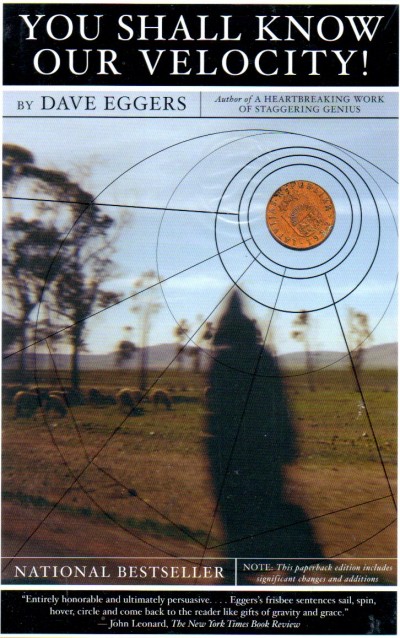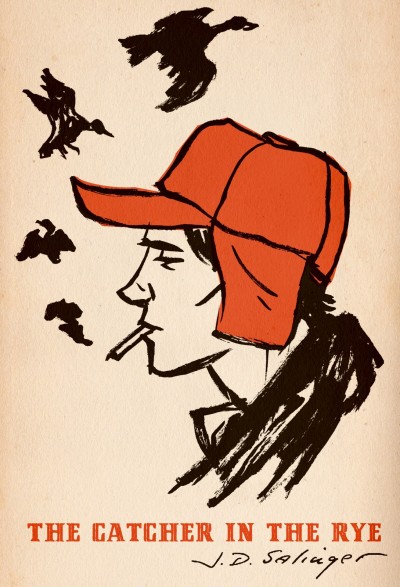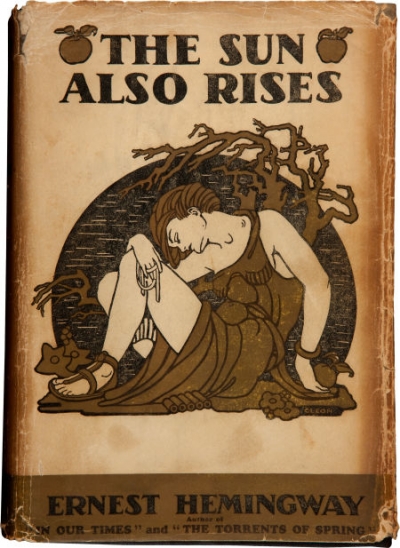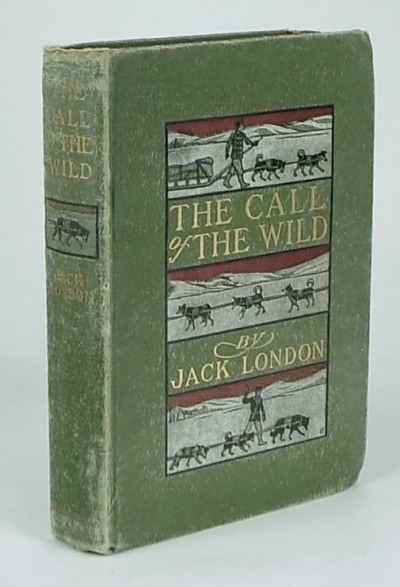
You Shall Know Our Velocity! — Dave Eggers (2002)
You Shall Know Our Velocity! is Dave Eggers’ first novel following A Heartbreaking Work of Staggering Genius. That categorization is almost useless though, since AHWOSG is an openly and self-consciously fictionalized memoir. This 2002 novel follows two childhood friends as they improvise a trip around the world following the death of their mutual close friend. The goal of the trip is to distribute approximately $80,000 that Will, the narrator, earned after an image of his silhouette was used for a light bulb company’s packaging. The two friends, Will and Hand, travel to remote countries like Estonia and Morocco and attempt to creatively distribute the money in an effort to cathartically restore their faith and the faith of others in the goodness of humanity. The novel is classic Eggers in both its deeply involved self-conscious thinking and its purification-through-travel plot.

The Catcher in the Rye — J.D. Salinger (1951)
The Catcher in the Rye is the highly influential and popular classic novel by author J.D. Salinger. The story is from the perspective of narrator Holden Caulfield, a sixteen-year-old student who returns to his native New York City “incognito” after flunking out of his esteemed prep school in Pennsylvania. Holden’s detailing of his time in New York City is a conversational, digressive and a revealing discussion of everyone he knows, meets and remembers. The voice of the narration is the centerpiece of the novel. Caulfield’s empathetic, overly sensitive; externally biting and hyperaware descriptions of those around him are a stunning, hopefully sincere and miserable account of humanity, still potent in 2013. I missed this classic novel in high school and early college when it seems to be conventionally encountered by its readers, but I found Salinger’s writing to be moving nonetheless. The complexity of Holden’s attitudes read as earnest and confused in a very genuine way. His narration is at once that of a child and an old soul, a combination of perspectives that many sensitive young people find themselves sorting through.

The Sun Also Rises — Ernest Hemingway (1926)
American novelist Ernest Hemingway’s classic 1926 novel The Sun Also Rises is a quasi-autobiographical story focused on a group of expatriate American and British citizens travelling from Paris to a bullfighting festival in Spain during the 1920s. The novel is famous for its restrained and reverent portrayal of the post-WWI supposedly dissolute “Lost Generation.” The Sun Also Rises was recommended to me for Hemingway’s representation of speech between friends during travel. I found the dialogue to be inspiring, but was also impressed with Hemingway’s treatment of such themes as masculinity, authenticity and the simultaneously exclusive and zealous culture of the “aficionado.”

The Call of the Wild — Jack London (1903)
Jack London’s classic 1903 novel The Call of the Wild is the anthropomorphic story of Buck, a sled dog during the 19th century Klondike gold rush in Alaska, adjusting to a harsh and primitive lifestyle after being kidnapped from his luxurious, domestic life in California. The main theme of the novel is the return to nature and survival of the fittest. The themes of power through struggle and the embracement of terrestrial existence directly mirror Friedrich Nietzsche’s book “The Anti-Christ.”







